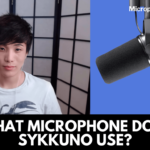Ever got saddled by the number of options made available to you at any shopping mart? You must have!
As it is a universal fact, the more options we have, the more confused we are going to become. The lesser the options, the lesser the confusion.
With that said, the writing is going to start in a New York minute, so make sure you have grabbed your pen and diary for noting down essential points.

Okay, let’s start!
When Should You Go for a Dynamic Microphone?
How about you prepare well for the English paper only to know that the paper you are appearing for is Science and not English? Will, that hourly preparation helps you in taking good grades in Science?
Of course, it will. As hard work always pays off, but not on that particular day. Got the difference?
Similarly, your money will go into thrash if you bring home the microphone that doesn’t align with the purpose. It brings me to the point where I need to tell you when you should purchase a dynamic microphone.
You should purchase dynamic mics if you want to record vocals in a studio or if you are planning to deliver a live speech to the audience. It is also a preferable option for recording the louder voices of drums and other musical instruments.
Apart from that, dynamic microphones do well as instrument amplifiers. They record low-end and high-end frequencies with accuracy and clearance.
Now you must be thinking, what is a dynamic microphone? And how does it work? Jump to the next paragraph to know in detail about this handy output equipment.
Simplest Definition of a Dynamic Microphone
We won’t embellish concepts for you. Everything will be served as simply as possible so that you won’t find it difficult to understand.
With that said, dynamic microphones are handy mics that use the principle of electromagnetism to convert audio signals into electrical signals. Anyone who has studied physics as a main course or side subject in his high school would agree with how electromagnetism works in the microphone.
Those who have never studied physics in school or college can relate to the working mechanism mentioned next.
Also Check: What Is Condenser Microphone?
Working Principle of Dynamic Microphones
As stated before, dynamic mics follow the concept of electromagnetism, and their working principle is identical to the working principle of loudspeakers.
Like traditional loudspeakers, dynamic mics contain a cone or diaphragm that is fastened to a coil known as a voice coil. Both structures are connected at the base of the apex. Furthermore, both loudspeakers and dynamic microphones allow the formation of the magnetic field around the coil, which helps in the passage of current.
The major difference between the two is in the pathway adopted by the current to flow through the field. In loudspeakers, the current oozes out from the amplifier and make its way through the voice coil. As the current of the voice coil and the magnetic system of the speaker collides, the sound is produced.
Contrary to loudspeakers, in dynamic mics, the sound is produced whenever the microphone’s diaphragm changes its position as they get struck by sound waves. As the diaphragm move, they force the coil to move. The movement of the coil triggers the current to move across the voice coil and produce sound energy.
Some Characteristic Features of Dynamic Microphones
1. Reliability and Ruggedness
Reliability and ruggedness are two main features of dynamic microphones. These mics are made from resilient and tough material, which means that they don’t get dysfunctional if they accidentally fall off your hand. The transducer used in them is robust and is immune to small damages.
2. Work without External Power Source or Battery
Ever heard about phantom power? Well, phantom power is any output that you need to provide to the microphone for making it functional. If you don’t provide it with that source, they won’t work.
The best thing about dynamic mics is that they work perfectly fine without any supply of batteries and power. Another best thing about this microphone is that it is durable. You don’t need to do a lot to keep it in a better position. With a little care, you can make them work for you for years.
Sound mesmerizing, isn’t it?
3. Show Dark-Colored Frequency Responses
It is hard for microphones to deal with ear-piercing sound as they are difficult to contemplate. Dynamic mics are preferable in this respect as they capture and transform low-end and high-end voices well and exhibit dark-colored frequency responses.
FAQs
- State the major setbacks of dynamic microphones.
The two major setbacks of dynamic microphones are that they are less sensitive to changing frequencies and poorly interpret high-frequency sounds.
- Can you use the dynamic microphone for recording the kicks of a drum and the tune of a brass?
Yes! Dynamic microphones are a good option for recording the kicks of a drum and the tune of a brass. Apart from these two, dynamic mics can be used with other musical instruments.
- Does dynamic microphones show any resistance to background noises?
Yes. It does show resistance to unwanted voices and tends to welcome only the needed ones. Dynamic microphones work on the cardioid pattern, which is famous for absorbing and analyzing all the sound signals coming from the front side and dismissing all the sound waves coming from the rear end.
- Can you use dynamic mics in home studios?
Yes. You can use them in home studios. These mics are robust, handy, resilient, and less sensitive, which is why newbies don’t find it hard to embark on their journey with them.
Final Statement
Dynamic microphones work on the principle of electromagnetic induction and transform audio signals into electrical signals. These mics are inexpensive, beginner friendly, and work without any supply of phantom power. The article has highlighted all the major things related to dynamic microphones. Hopefully, it will help you!
William Souza Here, I Am Sound Specialist, Have Trained Many Musicians And Singers. I Write Blog Contents About Sound, Music, Microphone Reviews, Speaker Reviews, Sound Card Reviews And All About Sound/Music Reviews And Instruction. I Am Writing On This Blog MicrophoneGuides.com As On My Experience And Will Update More Information & Review About Different Microphones For Different Users.









